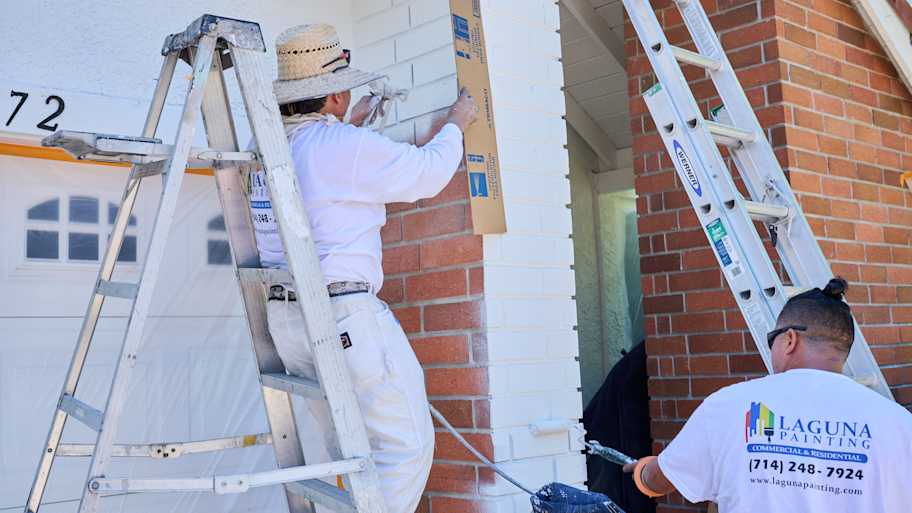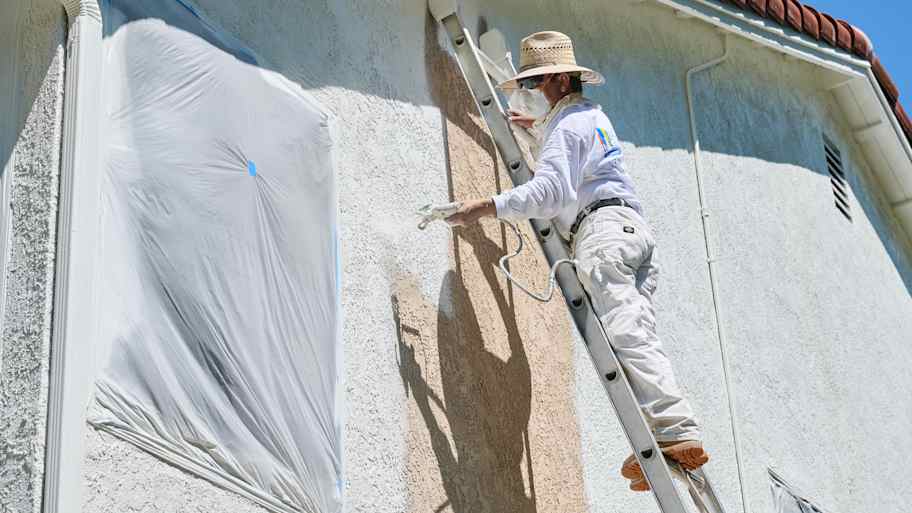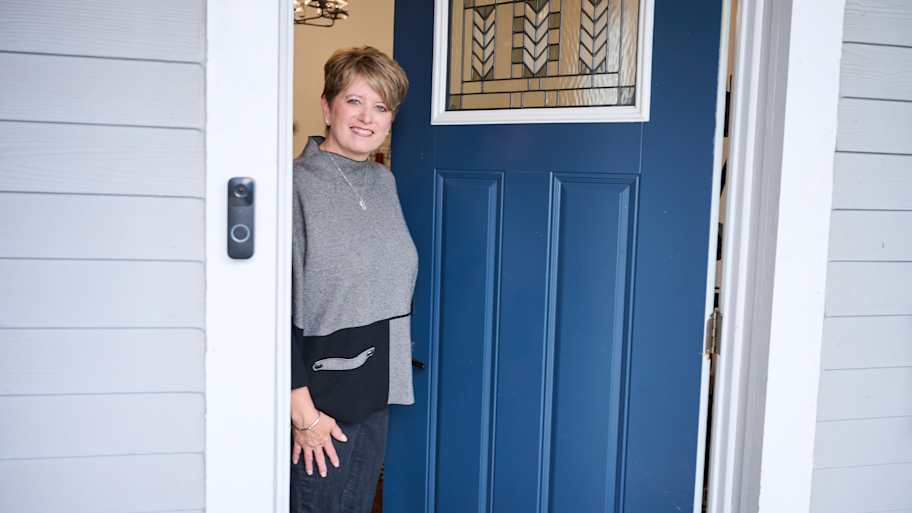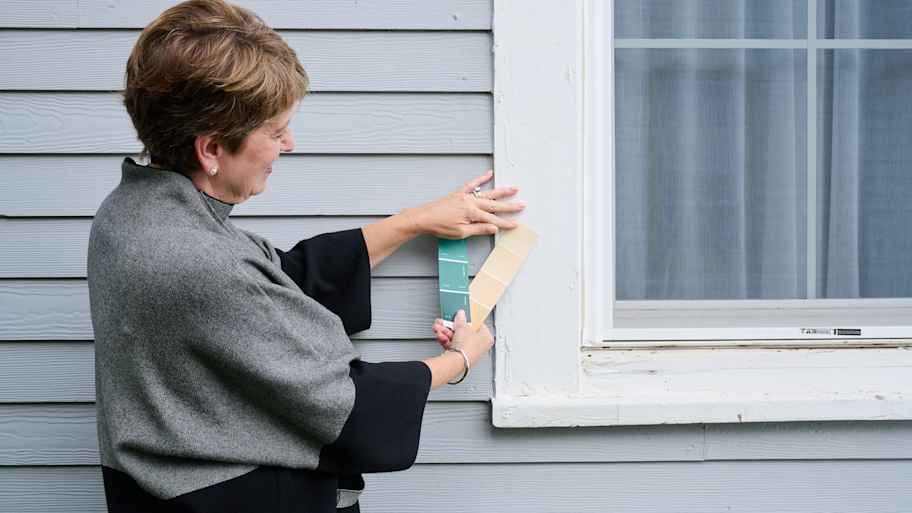Can You Paint a Vinyl Fence? What the Experts Say
Here are your best options if you’re on the fence


If your vinyl fence no longer has that new sparkle, you might wonder how to restore it to its original glory—but can you paint a vinyl fence? While it’s possible to paint a vinyl fence, experts don’t recommend doing so for a handful of reasons. Painting over your vinyl fence can void your warranty and ruin the curbside appeal of your setup. Paint doesn’t adhere well to vinyl surfaces, so it’s more likely to chip and scratch.
If you decide to paint a vinyl fence despite these potential risks, you can take a few steps to increase the probability of successful results, like painting in the right conditions and using a primer that’s up to the task.
Tips to Paint a Vinyl Fence

If you’ve come to the conclusion that painting your vinyl fence is still the best option, here are some tips to keep in mind to help the process go smoothly.
1. Avoid Painting in Inclement Weather
Vinyl is already a material that paint has a hard time adhering to, and painting in less than ideal weather conditions—like rain or wind—can make it even more difficult for paint to stick. Instead, do a project like this on a day when the weather is calm, warm, and sunny to get the desired effect.
2. Clean and Dry Your Fence Before Getting Started
Remove any obstacles that could make it even more difficult for paint to stick to your vinyl fence, like dirt or debris that might have built up since the last time it was cleaned. Rinse to remove most dirt, scrub with soap and a gentle sponge to get rid of tougher blemishes, and make sure the surface is totally dry before starting to paint.
3. Decide Whether to Use a Primer
While you might think a layer of primer will help paint adhere better to a vinyl fence, the opposite is actually true in some cases. The only instance in which you might benefit from using primer is if your fence is badly damaged and the original color has completely worn away.
4. Hire a Pro for the Best Possible Results
If your warranty is up and your vinyl fence is on its last leg, hiring a fence painter near you is more cost-effective than the cost of a vinyl fence replacement and will make your setup look new. They’ll have the materials and know-how to work with paint-resistant surfaces like vinyl fencing. Expect to pay between $750 and $4,250 for all the materials and labor involved in a fence painting project.
3 Reasons You Should Not Paint a Vinyl Fence

If you’re questioning whether or not you should try painting your vinyl fence, keep reading to find out about three of the biggest drawbacks.
Painting Your Fence Can Void Your Warranty
Many vinyl fence companies offer limited or lifetime warranties, so it can cost little to nothing to replace your setup in many cases. While painting itself won’t void your warranty, any damages incurred from the painting process (or trying to remove the paint later on) definitely will. If you’re still going to paint your vinyl fence, it’s best to do so after your warranty expires.
Paint Does Not Adhere Well to Vinyl Fencing
Wood can absorb paint easily, making customizing a wood fence with paint is easy. Vinyl, on the other hand, is not a porous substance and will not absorb paint in the same way. While starting with a layer of primer may allow the paint to adhere more easily in some cases, there’s not a lot you can do to change this. Even paint specifically designed for vinyl surfaces is likely to peel and scratch off a vinyl fence over time, especially outdoors where there’s less protection from the elements.
Increases Maintenance Costs
One of the biggest pros of vinyl fencing is just how low maintenance it is. It can’t absorb water, so there’s no risk of water damage. Also, its color won’t fade over time like a coat of paint might, so you can rest assured it will look great with infrequent care.
Once you paint it, though, there’s added upkeep to keep your fence looking nice. Suddenly your fence is more susceptible to sun damage and visible scratching and will need to be repainted every so often to keep up its best appearance, all of which requires extra effort and money.
Alternatives to Painting Your Vinyl Fence
If your vinyl fence no longer looks its best, but your warranty is up, and you know painting it will create more work and potential problems, all is not lost. There are many easy ways to cover up unsightly blemishes like scratches, from hanging twinkle lights to growing climbing plants on your setup. Vinyl fences are especially well suited for climbing plant growth because they’re moisture-resistant and less likely to incur water damage.
Frequently Asked Questions
If you paint a vinyl fence, it will likely stick to it for only a brief amount of time. This is because vinyl is not a porous material, so it's not an ideal surface for holding paint. Initially, paint will stick to your fence, but it will eventually peel off. Applying primer before painting your vinyl fence will help paint last longer. Certain primers are well-suited to vinyl, which means you can paint vinyl siding with the proper preparation.
The best type of paint for vinyl siding is acrylic paint. This type of paint—100% acrylic— is lightweight enough to help it adhere properly to a vinyl surface. For best results, apply two coats of acrylic paint to your vinyl siding. Avoid thick paint, as it will flake or peel off the vinyl siding.
The best way to prepare your vinyl fence for a paint job is to clean it with warm, soapy water and rinse it with a hose or pressure washer on a low setting. Be sure to let it totally dry, then sand the surface before applying an epoxy-based primer. After the primer, you're ready to paint your vinyl fence.





- How Long Does a Vinyl Fence Last?
- Vinyl vs. Wood Fences: Pros, Cons, and Costs
- Should You Repair or Replace Your Fence?
- 8 Types of Vinyl Fencing to Inspire Your Next Outdoor Project
- The Pros and Cons of Vinyl Fencing—Is There a Preference for PVC?
- How to Paint a Chain Link Fence in 3 Steps
- How to Make a Fence Taller for Privacy: 5 Simple Ways
- How Long Does It Take to Build a Fence on Your Property?
- Learn Who to Hire to Build a Fence on Your Property
- 16 Excellent Privacy Fence Ideas for Your Outdoor Space















